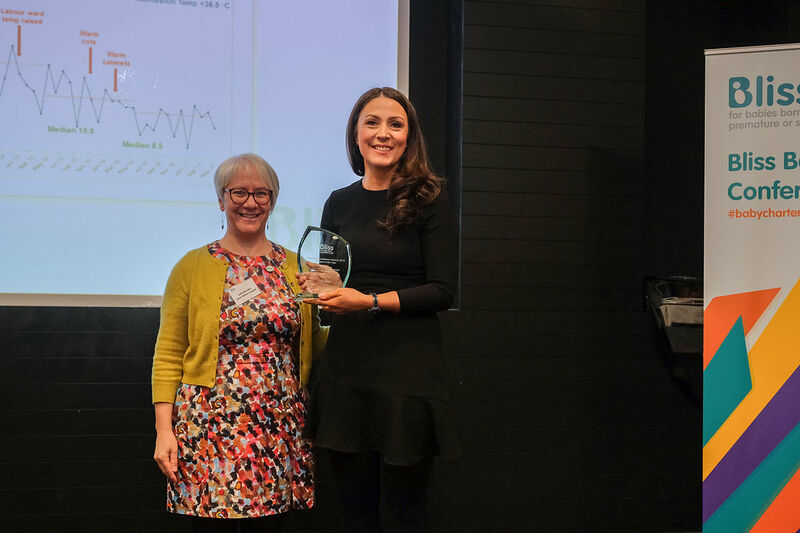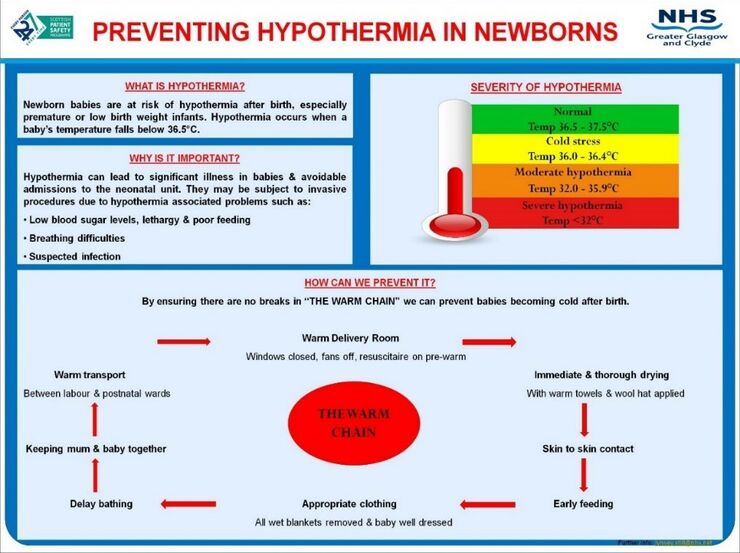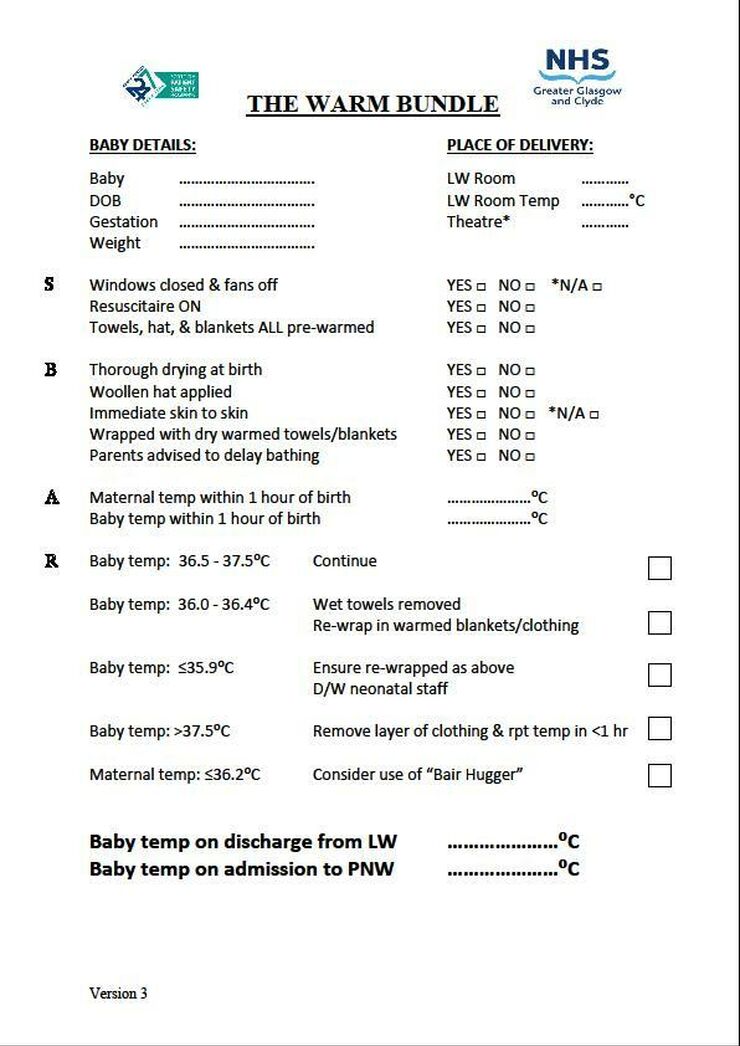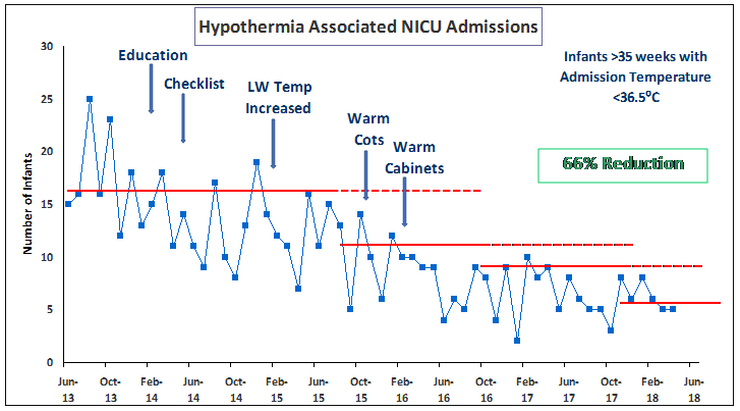Tackling Hypothermia
Hypothermia is a significant cause of morbidity and mortality within the newborn population, especially those born preterm and sick. For a number of infants, the clinical consequences of hypothermia and the associated morbidities can result in admission to the neonatal unit, with invasive procedures and prolonged hospital stays.
All of these can have considerable negative emotional and psychological impacts on the families of these babies, as well as the day-to-day working capacity of the unit itself. There can also be lasting and significant effects from the separation of mothers and babies, including impaired breastfeeding and parental bonding.
Following integration of maternity and neonatal services over a number of years from two separate units into a new combined service and labour ward, a significant problem with hypothermia in term infants born in newborn term infants emerged.
In an effort to overcome the problem, a small multidisciplinary group was set up to help improve thermoregulation within the neonatal population. The result was the ‘Warm Bundle’.
What was involved in the Warm Bundle?
The ‘warm bundle’ was developed to help standardise and enhance the process of regulating the thermal environment in the immediate stages following delivery. The interventions were centred around the key goal of keeping mothers and babies together. A number of measures were incorporated as part of the project:
Education
- Staff education on thermoregulation across obstetrics and neonates through group sessions and cascading of online video based on WHO “Warm Chain”
Poster Design
- Creation of informative poster displayed throughout labour ward and postnatal wards to highlight the problem and methods of prevention to parents
Checklist
- Creation of a checklist of care based on the warm chain
- Promotion of skin to skin to maintain normal body temperature for the newborn (in line with Principle 1 and 2 of the Bliss Baby Charter)
Further interventions were introduced due to emerging evidence of significant environmental issues. Following close collaboration with the obstetric and estates departments this included:
- Increasing the temperature of labour ward
- Installation of new thermostats for all delivery rooms
- The installation of new temperature control panels in theatre
- Warming cabinets for baby linen
- Warm cots for the smallest and highest risk infants
Engagement with parents, their families and the local community has resulted in the development of a knitting community that supplies the unit with an abundance of knitted hats and cardigans to help keep babies warm.



